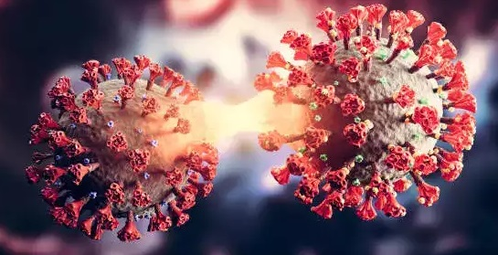New York: SARS-CoV-2, the virus that causes Covid-19 infections may be getting nipped in the bud in the nasal tracts, finds a study that explains young children’s remarkable resilience to the deadly virus.
It’s not that kids don’t get infected. They do. More than 90 per cent of kids age 4 and under in the US test positive for previous or current infection by SARS-CoV-2.
Yet, although kids under 5 represent about 6 per cent of the US population, they account for fewer than 0.1 per cent of Covid deaths in this country.
“For almost every infectious disease, the most vulnerable populations are at the extremes of age — the very young and the very old,” said Bali Pulendran, professor of microbiology and immunology and of pathology at Stanford University.
“But with Covid-19, the young are spared while the old are emphatically not. That’s been a mystery.”
Possible explanations included that young children seem to harbour fewer receptors for SARS-CoV-2 on their cell surfaces.
They’ve had more relatively recent encounters with benign coronaviruses than adults (the latter being less inclined to gum one another’s toys in day care settings or sneeze in each other’s face), bolstering immunity to newcomers.
There’s evidence for these and other hypotheses. But much of the solution to the mystery Covid poses may reside inside little kids’ noses, the researchers said.
For the study, published in the journal Cell, the Stanford team collaborated with Cincinnati Children’s Hospital Medical Center, and collected nasal and blood samples from 54 infants who’d become infected with SARS-CoV-2 before reaching age 2, and from 27 other children who’d tested negative throughout the observation period.
For comparison, the researchers obtained similar samples from several dozen adults.
All infected children in the study were, at most, mildly symptomatic.
In the blood of SARS-CoV-2-infected adults, SARS-specific antibody levels rose quickly to a robust peak, then dropped off precipitously, declining by 10-fold within six months.
Infants’ blood-borne antibodies to SARS-CoV-2 were a little slower to spike upward in response to SARS-CoV-2 infection. But in stark contrast to adults, their antibody levels never dropped — they either plateaued at a high level or kept on rising throughout the 300-day observation period, eventually rivaling those of the adults at peak.
“In no case did we see a decline,” Pulendran said. “This was completely unexpected.”
The kids’ antibodies, he noted, tended to be somewhat narrow spectrum: highly effective against the original invading variant, but providing less protection against other SARS-CoV-2 variants.
Another difference: In the blood of adults with even mild Covid-19 cases, there was a big increase in levels of a number of inflammation-promoting signaling proteins, previously shown to be associated with more-severe symptoms. In infected kids’ blood, this increase wasn’t seen.
In kids noses, though, it was another story.
“In the mucous membranes of the nasal cavity, we saw plenty of these very inflammation-promoting proteins,” Pulendran said. Among them was one called alpha-interferon, which has a noted knack for shutting down viral replication in infected cells.
Also absent in kids’ blood, but relatively abundant in the mucous membranes of their noses, was an immune molecule that calls in the thugs: That is, it recruits all-purpose pugnacious immune-cell buddies known as neutrophils to the area.
This big overall dichotomy between what’s going on in infected infants’ blood versus in their noses indicates to Pulendran that “the virus may be getting nipped in the bud in the nasal tracts,” which have a rapid, surprisingly effective immune response to a SARS-CoV-2 infection and deny the virus a launch pad for its spread to the lungs.
Pulendran envisions, for example, a nasal spray that could be given every couple of months to stimulate in adults’ upper respiratory tracts the same immune-response capabilities that infants routinely have in theirs, and prevent the virus from getting a foothold.
–IANS


Comments are closed.